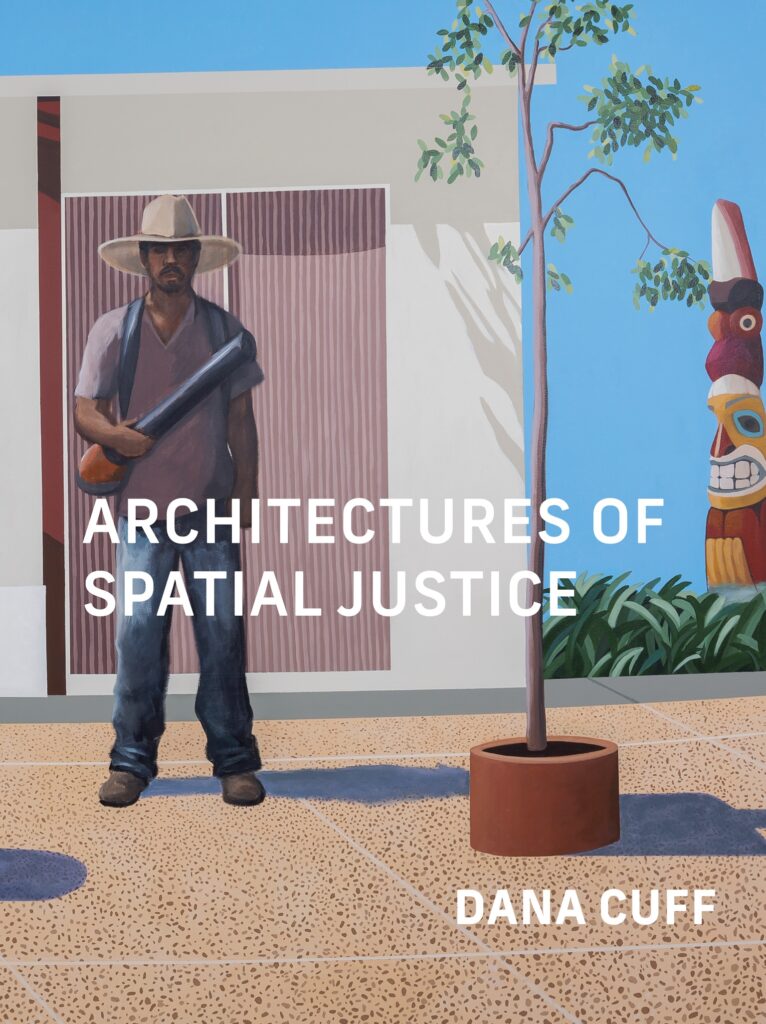
Architectures Of Spatial Justice (2023) Dana Cuff
Architecture of Spatial Justice, by Dana Cuff, explores the concept of spatial justice and its relationship to architecture and the built environment. Based on research the author has conducted for more than two decades at cityLAB, her design research centre at the University of California, Los Angeles (UCLA), the book explores the boundaries of architecture and its potential, focusing on morally driven practices that defy professional norms to address systemic injustices in the built environment.
Organised into eight chapters, the book draws on project-based research from around the world on the subjects of fairness, equity, and inclusivity in the way physical spaces are designed, organised, and accessed in cities.
The first chapter addresses the common good in design, the ethical dimensions of public architecture, the significance of diverse partnerships, the potential for projects as generative demonstrations, the realisation of such demonstrations as legible policy, and the momentum provided by historically critical junctures.
Spatial justice, as conceptualised in the text, involves “rethinking the very core of the discipline ” (p.3). It is framed as an “continual process of contestation over the rights to the city”4 (p.4), encompassing the “equitable distribution of and access” (p.4) to urban resources. The author argues that while architecture alone cannot address injustices, it must embrace collective creativity, disrupt conventional projects, and view labour as a generative process rather than completion-oriented. Spatial justice, in contrast to a consumer-centred, neoliberal model, redirects design towards public goods. The text challenges the separation of aesthetics and social purpose, advocating for a reevaluation of architectural principles. This involves addressing imbalances between clients and the public, architects and clients, and challenging inherent power dynamics within the profession. To fully realise the potential of spatial justice, the text emphasises the need for a critical examination of architecture’s role in relation to privilege, power, aesthetics, social dynamics, and capital.
The subsequent chapters structure the discussion around the questions asked in the first one, ultimately considering whether architecture can disrupt its own power relations to address past inequities and shape a more desirable future.
Cuff employs a hybrid format between an architectural monograph and a history text (p.16) to highlight architecture’s potential for transformation, addressing issues like housing crisis (chapter 2,3, 5 and 7), homelessness (chapter 2 and 7), racial segregation (chapter 1, 2 and 4), displacement from gentrification (chapter 2 and 6), and climate change (chapter 3). “This book enters directly into the debates about architecture’s role in addressing the growing unhoused population, continued racial segregation, and displacement brought about by gentrification, and it is germane to quandaries about architecture and climate change.” (p.16)
The architecture is limited to produce radical change but a series of examples of good practice show that architecture can provide meaningful solutions, inspire positive social shifts, and contribute to the creation of more equitable and sustainable environments. The book presents the innovative work of architectural practices, including cityLAB, as models with the potential for widespread impact.
Ioana Ramona Cecălășan
Universitatea Tehnică din Cluj-Napoca (UTCN)
Cuff, Dana ‘Architectures Of Spatial Justice ’ Published by MIT Press (2023)
